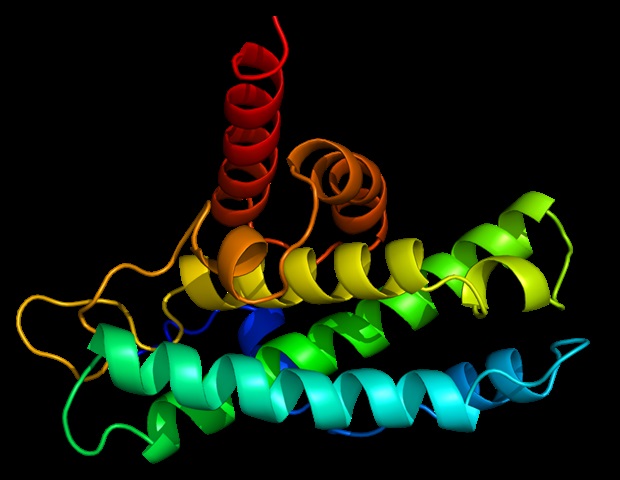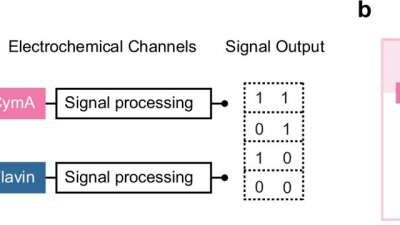Health
New Study Reveals Protein Plaques Act as Enzymes in Neurodegeneration

Research led by Pernilla Wittung-Stafshede at Rice University has uncovered that protein plaques associated with neurodegenerative diseases, particularly Parkinson’s, serve an active role in energy depletion within brain cells. These findings, published in the journal Advanced Science on October 16, 2023, reveal that clumps of the protein alpha-synuclein can break down adenosine triphosphate (ATP), the essential energy currency of cells.
The study challenges the previous notion that these plaques are merely waste products. Instead, they demonstrate that when ATP binds to these clumps, the protein undergoes a transformation, reshaping itself to create a pocket that traps ATP. This mechanism enables the clumps to cleave ATP, thereby releasing energy and functioning similarly to enzymes. “We were astonished to see that amyloids, long thought to be inert waste, can actively cleave ATP,” Wittung-Stafshede stated, emphasizing the significance of this discovery.
A New Understanding of Amyloid Clumps
To investigate the enzymatic properties of alpha-synuclein clumps, the research team first synthesized uniform aggregates in the laboratory. They conducted experiments to determine if these clumps could hydrolyze simple chemical compounds before examining ATP. The results confirmed that the protein aggregates could indeed accelerate the breakdown of ATP.
Employing advanced imaging techniques such as cryo-electron microscopy, the researchers collaborated with specialists from ETH Zürich in Switzerland. The imaging revealed that when ATP attaches to the clump, a flexible region of the protein folds over, forming a pocket that traps the ATP molecule. This pocket, characterized by positive charges, facilitates the breakdown of ATP, transforming a passive aggregate into a reactive structure.
To further validate their findings, the researchers systematically altered the protein to eliminate the positive charges in the pocket. Although the modified proteins still formed clumps, they were unable to hydrolyze ATP or create the necessary binding pocket. This highlighted the critical role of the specific structure in enabling the enzymatic reaction.
Potential Implications for Therapeutics
The implications of this research extend beyond mere biochemical curiosity. The ability of protein clumps to break down ATP suggests they may contribute to more severe cellular dysfunction than previously understood. By draining energy from cells, these aggregates could interfere with vital functions, including the mechanisms responsible for clearing them from the brain. This evasion of the body’s natural cleanup processes raises concerns about the progression of neurodegenerative diseases.
Looking ahead, the study opens avenues for potential therapeutic interventions. If drugs can be developed to stabilize these clumps in less harmful configurations, it could mitigate their detrimental effects. Additionally, the research indicates that natural substances in the brain may influence the configuration of these protein aggregates, which might explain the variability in clump shapes observed across different neurodegenerative disorders.
To assess the real-world applicability of their findings, the researchers introduced neuronal cell extracts to the protein clumps. They observed that multiple compounds in the mixture underwent chemical transformations, suggesting that the clumps interact with various cellular molecules beyond ATP. If confirmed in living cells, this discovery could elucidate why neurons in diseases like Alzheimer’s and Parkinson’s experience energy deficits and other forms of cellular stress leading to cell death.
As the global population continues to age, understanding the mechanisms behind these neurodegenerative diseases becomes increasingly critical. Pernilla Wittung-Stafshede emphasized the need to address these conditions at their source, stating, “We want to learn how to stop neurodegenerative diseases at the source, directly detoxifying damaging species, instead of just treating symptoms as we do today.”
This research was supported by various esteemed institutions, including the Knut and Alice Wallenberg Foundation, the Swedish Research Council, and the Swiss National Science Foundation. Co-authors include researchers from Chalmers University of Technology and ETH Zürich, highlighting the collaborative effort behind this groundbreaking study.
-

 Entertainment2 months ago
Entertainment2 months agoAnn Ming Reflects on ITV’s ‘I Fought the Law’ Drama
-

 Entertainment3 months ago
Entertainment3 months agoKate Garraway Sells £2 Million Home Amid Financial Struggles
-

 Health2 months ago
Health2 months agoKatie Price Faces New Health Concerns After Cancer Symptoms Resurface
-

 Entertainment2 months ago
Entertainment2 months agoCoronation Street’s Carl Webster Faces Trouble with New Affairs
-

 Entertainment2 months ago
Entertainment2 months agoWhere is Tinder Swindler Simon Leviev? Latest Updates Revealed
-

 Entertainment3 months ago
Entertainment3 months agoKim Cattrall Posts Cryptic Message After HBO’s Sequel Cancellation
-

 Entertainment2 months ago
Entertainment2 months agoMasterChef Faces Turmoil as Tom Kerridge Withdraws from Hosting Role
-

 Entertainment1 month ago
Entertainment1 month agoOlivia Attwood Opens Up About Fallout with Former Best Friend
-

 Entertainment3 months ago
Entertainment3 months agoSpeculation Surrounds Home and Away as Cast Departures Mount
-

 World1 month ago
World1 month agoCole Palmer’s Mysterious Message to Kobbie Mainoo Sparks Speculation
-

 Entertainment2 months ago
Entertainment2 months agoITV’s I Fought the Law: Unraveling the True Story Behind the Drama
-

 Entertainment3 months ago
Entertainment3 months agoMarkiplier Addresses AI Controversy During Livestream Response















